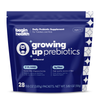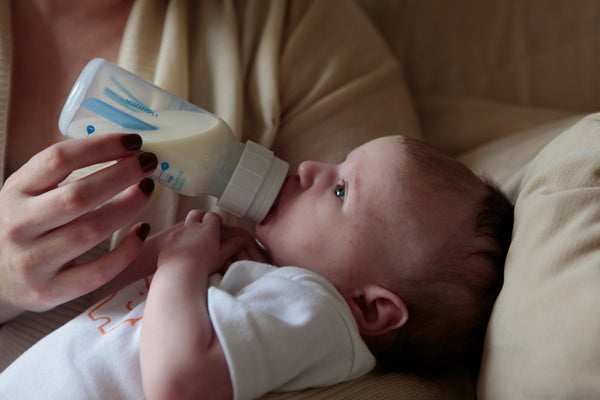A Pediatric Chiropractor’s Guide to Belly Massages for Kids Constipation Relief with Dr. Lydia Weir
share this article

As a Pediatric Chiropractor, there is only so much I can do at your kid’s appointment to help reduce the symptoms from digestive discomfort like constipation. A big part of your kid’s constipation relief strategy includes the parent’s involvement, which is why I provide additional exercises and tips to implement outside of my office.
We only get to spend about 1% of the time with our patients in their life so what parents implement at home with the remaining 99% plays a huge role in the overall outcome of their kid’s gut health.
In this article, I will be sharing at-home belly massages that can help facilitate the elimination of waste to support constipation relief in kids.
Before You Begin
Before doing a belly massage on your kiddo at home, you want to make sure that they are in the optimal environment to do so. Here are some tips for before you begin:
-
Find the right time to do the massage. Before or after feeding is not recommended, as well as before they have napped. After a warm bath is highly recommended.
-
Keep a light layer on or remove clothing on your little one. Skin to skin is preferred, but not absolutely necessary.
-
Regulate room temperature. Make sure the temperature of the room is warm enough for them, especially if they will not be clothed.
-
Ensure that your hands are warm. The warmth from your hands, along with a comfortable temperature of the environment will allow musculature in the infant to relax versus constrict, allowing stools to move more freely.
-
Use lotion or oil. Rub between hands first to ensure that it is warm before putting on their belly
-
Always remember that we want to always massage in a clockwise fashion!
-
Buy Now
Join the
Happy Gut Club
Daily reads to help your little ones lead happier and healthier lives.
Massage Techniques
There are three different massage exercises for kiddos that I teach parents in my office to do at home for constipation relief.

Exercise 1: The I Love You Massage
For this exercise, you will lie your kiddo on their back in front of you.
-
First Step: Trace an “I” on the right side of their belly
-
Start at the lowest portion on their abdomen and trace upwards.
-
This is following the Ascending Colon (Kahai, et al.)[2]
-
Do this 10 times.
-
Second Step: Trace an upside down “L”
-
For this part, you are going to start where you ended tracing your “I” on the upper right quadrant of their belly.
-
You are going to massage from the right upper quadrant to the left upper quadrant - this follows the Transverse Colon (Kahai, et al.)
[2] -
Immediately following that motion, you are going to massage from the left upper quadrant to the left lower quadrant - this follows the Descending Colon (Kahai, et al.)
[2] -
Do this 10 times.
-
Third Step: Trace an upside down “U”
-
This is essentially putting the “I” and “L” massage all together
-
Start in the lower right quadrant of their belly and massage to the upper right quadrant.
-
Then, immediately massage from the upper right quadrant to the upper left quadrant.
-
Followed immediately by massaging from the upper left quadrant to the lower left quadrant.
-
Do this a total of 10 times
Exercise 2: The Bicycle Massage

Most babies, especially after birth, typically reside in the fetal position until they start to gain muscle and open up more. Even after that, when they are put into any sort of carrying or lying device, there is a slight bend at their hips. There are two parts of the intestines that live in that area:
-
The Ileocecal junction, the point of connection between the small intestine and large intestine (Shafik, et al.)
[3] -
The Sigmoid Colon, the termination point of the large intestine where it turns into the rectum (Harkins, et al.)
[1]
For this exercise, start with the baby lying on their back in front of you.
-
Step 1: Place your hands around your little one’s pelvis on each side - this will allow you to control their hips to make the bicycle motion.
-
Step 2: Your thumb’s will be placed over the ileocecal junction (right side) and sigmoid colon (left side).
-
Step 3: From there, you are going to bicycle your kiddos’ legs/hips and massage your thumbs in a clockwise direction over those two areas.
-
Do this for a total of 20 bicycle kicks.
Exercise 3: The Tuck and Roll Massage

This massage will help any additional gas in the intestines pass through, which is big for infants who struggle with colic or uneasy bellies due to gas.
For this exercise, start with your baby lying on their back in front of you.
-
Step 1: Extend their legs outwards to help stretch their belly.
-
Step 2: Tuck their knees to their chest and roll their body in a clockwise fashion
-
Step 3: Then extend their legs again
-
Do this 10 times.
Key Takeaways
While doing these at-home belly massages for your kiddos is not the only answer when dealing with chronic constipation, it can help provide some relief during digestive discomfort. Although they will help facilitate proper movement through the GI tract, it is important to ensure that your little one is also eating proper nutrients and consuming enough prebiotic fiber, such as Begin’s Prebiotics to support softer and more frequent stooling. In addition, it may help to rule out a neurological imbalance, which can lead to constipation. If your kid struggles with constipation, seeking out care with a Pediatric Chiropractor is highly recommended. For more information about whether a Neurologically-Focused, Pediatric-Trained Chiropractor is the right choice for your kids, check out our practice at Delta Health.

















